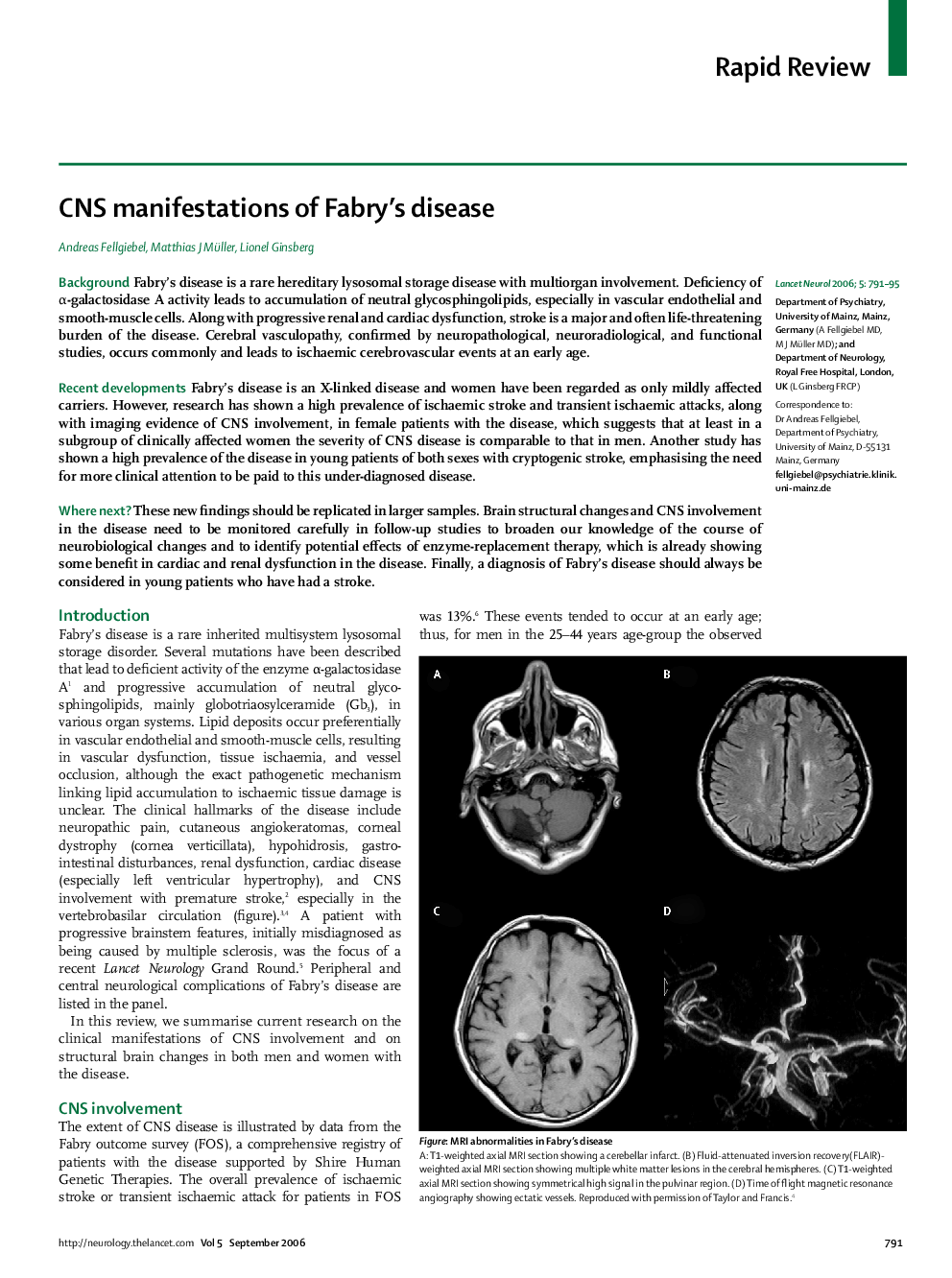| Article ID | Journal | Published Year | Pages | File Type |
|---|---|---|---|---|
| 3067917 | The Lancet Neurology | 2006 | 5 Pages |
SummaryBackgroundFabry's disease is a rare hereditary lysosomal storage disease with multiorgan involvement. Deficiency of α-galactosidase A activity leads to accumulation of neutral glycosphingolipids, especially in vascular endothelial and smooth-muscle cells. Along with progressive renal and cardiac dysfunction, stroke is a major and often life-threatening burden of the disease. Cerebral vasculopathy, confirmed by neuropathological, neuroradiological, and functional studies, occurs commonly and leads to ischaemic cerebrovascular events at an early age.Recent developmentsFabry's disease is an X-linked disease and women have been regarded as only mildly affected carriers. However, research has shown a high prevalence of ischaemic stroke and transient ischaemic attacks, along with imaging evidence of CNS involvement, in female patients with the disease, which suggests that at least in a subgroup of clinically affected women the severity of CNS disease is comparable to that in men. Another study has shown a high prevalence of the disease in young patients of both sexes with cryptogenic stroke, emphasising the need for more clinical attention to be paid to this under-diagnosed disease.Where next?These new findings should be replicated in larger samples. Brain structural changes and CNS involvement in the disease need to be monitored carefully in follow-up studies to broaden our knowledge of the course of neurobiological changes and to identify potential effects of enzyme-replacement therapy, which is already showing some benefit in cardiac and renal dysfunction in the disease. Finally, a diagnosis of Fabry's disease should always be considered in young patients who have had a stroke.
